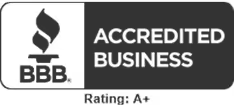Your credit report is one of the most important financial documents you'll ever have, but most people never actually look at it until something goes wrong. According to the Federal Trade Commission, about one in five Americans has at least one error on their credit report. And even small mistakes can lead to higher interest rates, loan denials, or trouble renting an apartment.
Let's walk through the most common credit report errors and what you can do to fix them.
1. Accounts That Don't Belong to You
It happens more often than you'd think… someone else's account shows up on your report. This usually occurs because of mixed files (similar names) or identity theft.
How to fix it: Contact the credit bureau and dispute the account. Be sure to include a copy of your ID and any proof that the account isn't yours.
2. Outdated Negative Information
Most negative marks, like late payments or collections, should disappear after seven years. When they stick around longer than they should, your score takes an unfair hit.
How to fix it: File a dispute with the bureau and reference the Fair Credit Reporting Act (FCRA), which sets clear time limits on how long negative information can be reported.
3. Incorrect Account Status
Sometimes an account you've already paid off still shows as "open" or "past due." That can confuse lenders and negatively impact your credit score.
How to fix it: Provide payment confirmation or a zero-balance statement when you dispute the record.
4. Duplicate Accounts
A single debt might appear twice- once under the original creditor and again under a collection agency. That doubles the damage to your score.
How to fix it: Dispute one of the listings and point out that it's a duplicate of an account already on your report.
5. Misspelled Names or Wrong Addresses
These may seem minor, but errors in your personal information can lead to mixed files or make it more difficult to verify future disputes.
How to fix it: Update your information directly with all three credit bureaus: Experian, Equifax, and TransUnion, and keep records of the changes.
6. Identity Theft Red Flags
Fraudulent accounts, hard inquiries you don't recognize, or sudden drops in your score can all be signs of identity theft.
How to fix it: Freeze your credit immediately, file a fraud alert, and report the theft at IdentityTheft.gov. Then, work with each bureau to identify and remove any fraudulent activity.
7. Balance or Limit Errors
If your reported balance is higher than what you actually owe, your credit utilization ratio, a major factor in your score, can spike unnecessarily.
How to fix it: Compare your current statements with what's on your report. If something doesn't match, dispute it and ask your creditors to update the information.
Want to learn more about credit reports and everything else related to your personal finance? Check out Personal Finance Made Easy!
How to Dispute Credit Report Errors
You can file disputes for free with each of the major bureaus:
Most disputes get resolved within 30 days. If the bureau verifies your claim, they're required to correct the information and send you an updated report.
Your credit report isn't set in stone, and errors can typically be fixed. Make it a habit to review your report at least once a year; you can get a free copy at AnnualCreditReport.com. If you spot something that doesn't look right, don't wait! A few minutes of attention now could save you years of financial stress down the road.
Need help with the things that are legitimately on your credit report- but you wish they weren't? See how much we can help you save on your debt!









-min.avif)

